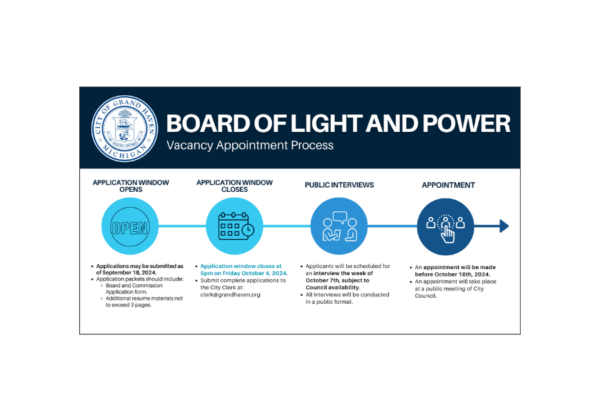COMMUNITY NEWS
Wednesday, June 1, 2022, | Grand Haven, MI — Earlier this month, the Midcontinent Independent System Operator (MISO), the organization that oversees electricity transmission to Grand Haven and a region spanning over 15 states, warned utilities within its footprint of the possibility of power shortages this summer during peak demand.
During these times, portions of MISO’s system may experience heightened risk for necessary “load shedding,” also referred to as rolling brownouts. Load shedding is a controlled, temporary power outage to prevent wider system failure during high usage times when customer demand exceeds the available capacity of the system. All affected utilities share load shedding responsibilities proportionally so that no areas lose power entirely.
“We’re preparing for the possibility of required load shedding events this summer as directed by MISO, and we will implement a fair process for reducing GHBLP power requirements to achieve an appropriate and proportional response,” said BLP General Manager David Walters. “These region-wide capacity issues affect every utility in Michigan. Minimizing customer disruptions through a planned process and communicating that process in advance with our customers is our highest priority.”
The current capacity strain stems from increased power demands and fewer available power generation facilities resulting from plant retirements. MISO reported in January that “…many thermal resources have recently retired from service due to economic, regulatory, and environmental pressures, and the aging thermal assets that remain in service may be more prone to unplanned outages and face supply chain issues.”
“As a regional grid, we are simply retiring plants faster than we are replacing them,” Walters said. “Thermal assets, as MISO refers to them, are fossil fuel and nuclear plants that can be dispatched up or down as needed to meet load, but newly installed renewable assets don’t have that same flexibility without additional system storage.”
Times of peak system use have historically occurred during summer stretches of high temperatures that may continue for several days at a time. For example, three or more consecutive days of 90+ degree weather increases the demand for power to keep pace with the increased use of air conditioning. However, moving forward, MISO does project similar potential problems during growing winter usage peaks when solar output is lower.
In the event that MISO orders load shedding, the BLP, and other impacted utilities will have already asked for voluntary reductions of customer power use through turning off unnecessary electronics or lights and limiting air conditioning use by increasing the thermostat a few degrees. Voluntary efforts will continue over the extended time of the emergency. Rolling outages would most likely not last longer than a few hours per circuit, with other portions of the service area then sharing the responsibility until the load is reduced to within generation capacity.
“The BLP is committed to a fair process in planning required load shed events by temporarily shutting off power to different circuits in the service area on a rotating basis if voluntary reductions aren’t enough,” said Walters. “We will alert our customers as soon as possible in the process to lessen the impacts of the disruption as much as we can. However, it is important to note that we can only provide advanced notice if we are similarly provided such notice by MISO.”
GHBLP plans to share load-shedding details and other updates at ghblp.org as information becomes available.



